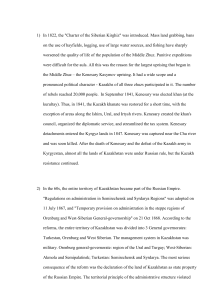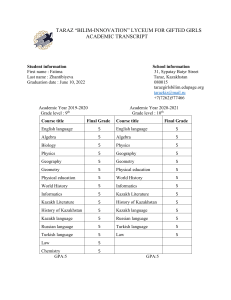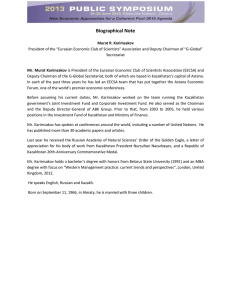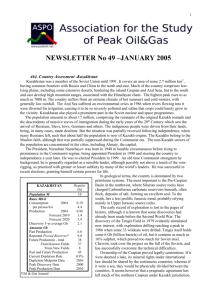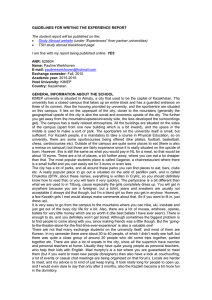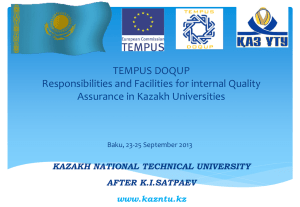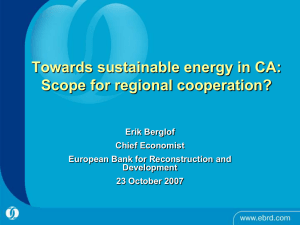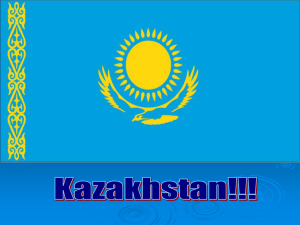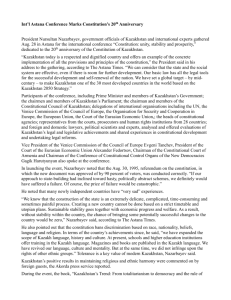Is Eurasian economic integration good or bad for Kazakhstan?
advertisement
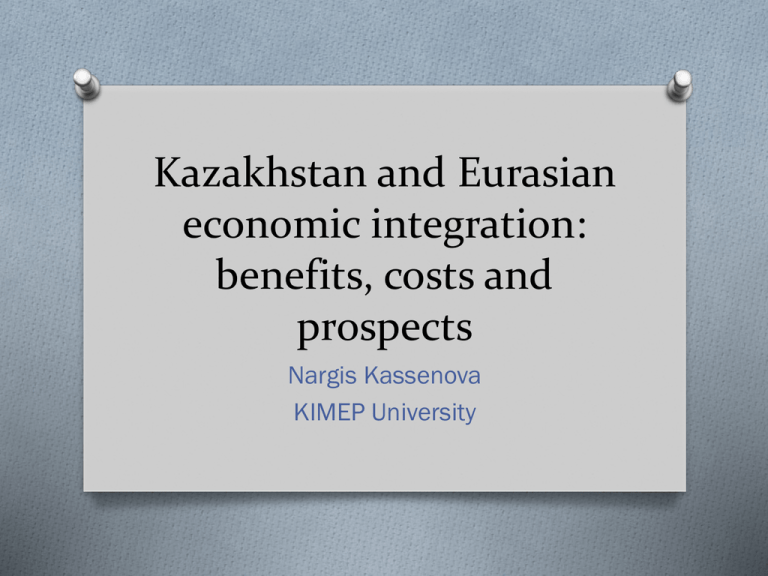
Kazakhstan and Eurasian economic integration: benefits, costs and prospects Nargis Kassenova KIMEP University Promised benefits OMore trade (market of 170 m people and better opportunities for doing business in Russia and Belorussia) OMore attractive for companies and investments because of lighter taxation and better “doing business” indices OAccess to Russian domestic tariffs for transit of goods OPreparation for WTO ONo other alternative – it will be easier to withstand crises together Kazakhstan-Russia trade 2009 2010 2011 2013 Trade turnover $12.4b $17.9b $22.7b $23.4b (17.9%) Import $9b (31.3%) $11b (39.4%) $16.2 (41.4%) $17.6b (36%) Export $3.5 (8%) $4.8b (9%) $7.5 (8%) $5.8b (7%) Trade turnover in 2008 – $20b (before crisis) O Trade creation or trade diversion? O Ad valorem equivalent tariff rate increased from 6.45 % to 12.1% O Trade regime less liberal O Kazakhstan - EU trade: O Turnover in 2013: O $54.7 b (41%) O EU imports – $9 b (share fell from 29% in 2009 to 18.6% in 2013) O Exports to EU – $45.6b (53.9%) in 2013 O Kazakhstan – China trade: O Turnover in 2013: O $22.7 b (17%) O Imports: $8.3 b (17.1%) against $3.5 b (12.6%) O Exports: $14.3 b (17.1%) O Problems experienced by Kazakh producers: O Certification O Subsidies O Larger capitalization of Russian companies O Some success stories: automobile industry, textile, computer equipment (?!) O Black market O Access to Russian domestic tariffs: O Promised unification of transport tariffs didn’t take place, instead Kazakh transport companies as of 1 January 2014 pay international tariffs O According to the Treaty, common market for gas, oil and petroleum products by 2025 O Preparation for WTO O Delay with Kazakhstan’s accession, confusion O Withstanding crises together O Crisis spillover effect O Other benefits: O Human factor: more comfortable for ethnically Russian population in the country O Good relations with Russia Other discontents O Weak negotiators on the Kazakh side O Imbalances in decision-making O Differences in goals: economic vs. political O Differences in desired pace and scope of integration O Prices on consumer goods went up O (Food prices on the five-year period grew 70%) O Spillovers: currency devaluation (11 February – 19% tenge devaluation) Prospects O Birds view: Can it be a success-in-the making? O Eurasian integration seems to be in line with global trends (in terms of growing regionalism in trade), but goes too deep and too fast O Political integration (delegating part of the country’s sovereignty) goes against the trend of continuing nation-building O There is no new set of attractive values that would create the basis for a new union O Russia is no longer our “window to the world” O Current Russian approach diverges from Kazakhstan’s desired course O Wait out and try to maintain its multivector foreign policy following the aspiration to integrate into the global economy and community
